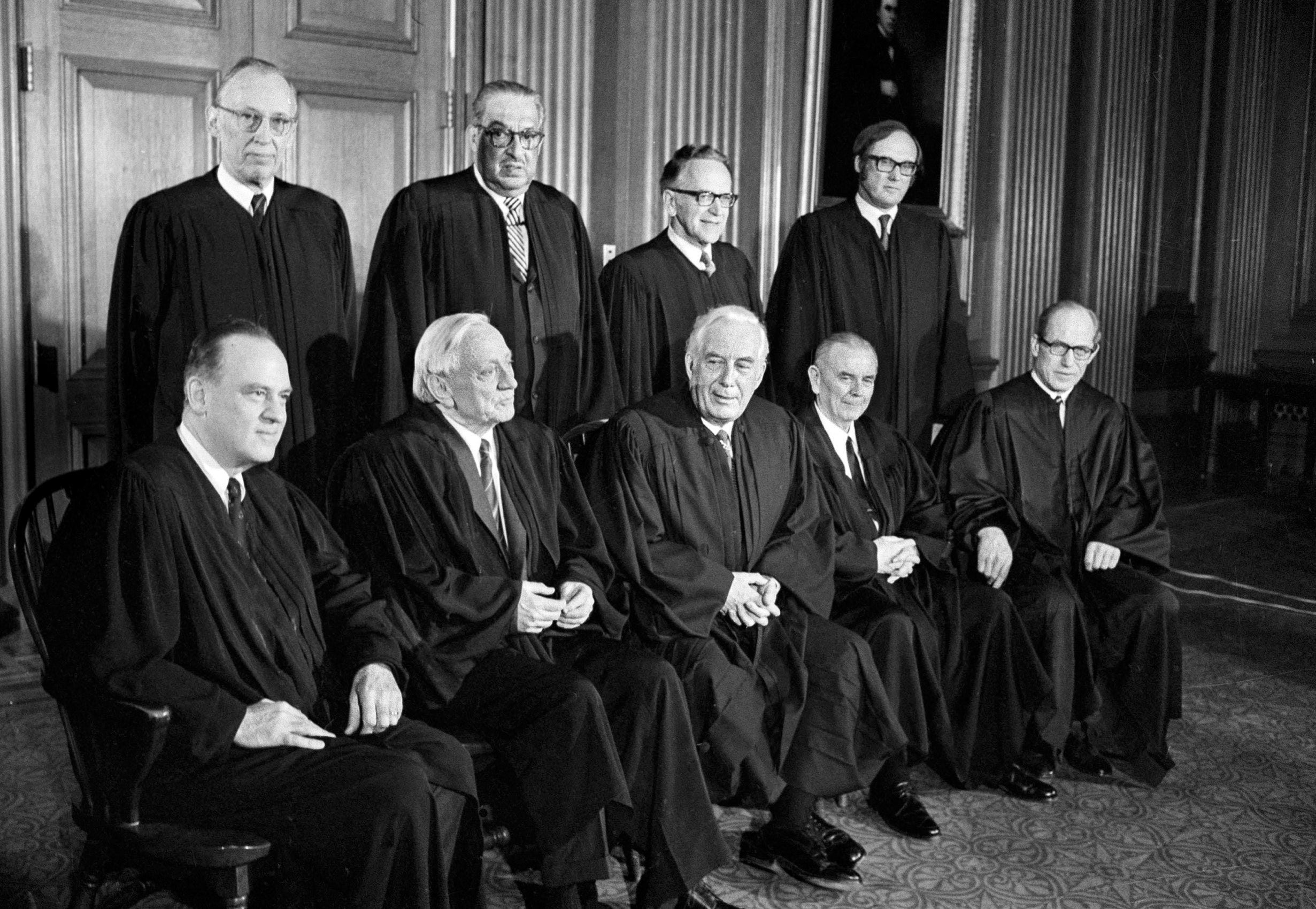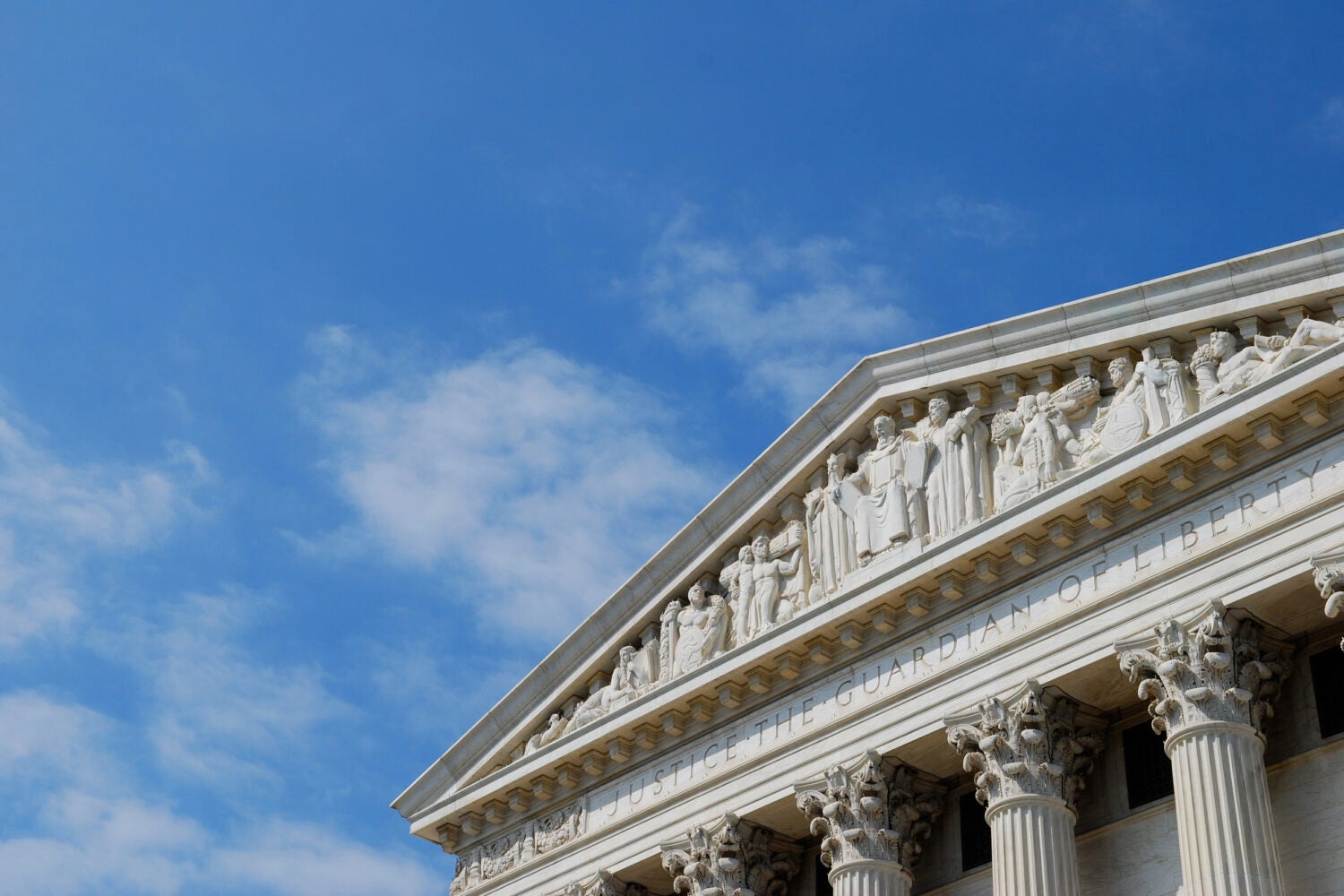More than 50 years ago, the U.S. Supreme Court held in Furman v. Georgia that the death penalty was an unconstitutional violation of the Eighth Amendment ban against cruel and unusual punishment. With that, 629 people on death row nationwide had their capital sentences commuted, and the death penalty disappeared overnight.
“Furman was neither a tremendous success nor a terrible failure but a complicated story of unintended consequences and echoes of Furman continue to this day to have tremendous impact.”
Carol Steiker
But Furman didn’t abolish capital punishment for very long. Four years later, Gregg v. Georgia and several companion cases made clear that governments could impose capital punishment under certain conditions. Those decisions were a response to the backlash sparked by Furman, which appeared to revive support for a practice that had been in sharp decline for years. Today, 27 states in the U.S., as well as the federal government, retain the death penalty, and as of April 2022, one source reported that there were 2,414 people on death row across the country. Despite what many would have predicted in 1972, when the Furman decision suggested the U.S. would become an international leader in eliminating the death penalty, today it’s the only Western democracy that still imposes it.
Still, while the death penalty persists in the U.S., it’s not exactly thriving. Indeed, it’s once again “withering” across the country, says Carol S. Steiker ’86, the Henry J. Friendly Professor of Law at Harvard Law School, who has taught Capital Punishment in America at the school since 1993. Though Furman (and its subsequent overruling) helped fuel the death penalty’s revival, it also set in motion a long series of events that may ultimately eliminate capital punishment in the United States, Steiker says.
“Furman was neither a tremendous success nor a terrible failure but a complicated story of unintended consequences and echoes of Furman continue to this day to have tremendous impact,” says Steiker, who is co-author, with her brother, Jordan Steiker ’88, of “Courting Death: The Supreme Court and Capital Punishment” (Harvard University Press, 2016) and co-editor, also with him, of “Comparative Capital Punishment” (Edward Elgar, 2019).

“Furman was a remarkable intervention,” says Jordan Steiker, a professor at the law school at the University of Texas at Austin and co-director of its Capital Punishment Center. “Even though it was quite short-lived in suspending the death penalty in the U.S., it completely changed its course because it essentially inspired or required states to rethink how they were doing capital punishment. And ultimately, the practice of the death penalty changed substantially over time.”
Given the greatly heightened public attention to the power of the Supreme Court today, the 50th anniversary of Furman is an opportunity to reexamine not just the history of the death penalty but the appropriate role of the Court in American life, Carol Steiker and others believe.
“Right now a lot of people are wondering how much of a role we want the courts to play in deciding what rights are guaranteed by the Constitution, and Furman v. Georgia is a unique example of when the Court struck down a policy that was widely prevalent throughout the states for violating the Constitution,” says Gene Young Chang ’24, who has been studying the death penalty with Steiker since he was a freshman in her Harvard College course The American Death Penalty: Morality, Law, and Politics. Furman, he says, “teaches us things about the role of the courts in a democratic society, the scope of constitutional rights, and the proper method for defining those rights.”
Categorical abolition of the death penalty across the nation is unlikely without another Furman v. Georgia, “what you might call Furman II, which is obviously not forthcoming from this Court or anytime in the foreseeable future,” Carol Steiker says. Instead, the future of the death penalty, she says, is being played out at the local level, in “a kind of guerrilla war going on county by county, state by state, with the election of progressive prosecutors who do not seek the death penalty, state legislative activity, and state constitutional litigation under state constitutions.”
The final death knell for capital punishment will likely depend on a very different Supreme Court from the one we have today, she says. “But at that point,” given other trends in the country, “it may be more like a coup de grâce rather than what it was at the time of Furman.”
History of a ‘remarkable intervention’
In the 1960s, due to a campaign by the NAACP Legal Defense and Educational Fund to challenge its constitutionality in cases across the country, capital punishment was in decline. Indeed, no one was executed in the five years before Furman, as states waited to see what the high court would rule. In 1971, the Supreme Court rejected a due process challenge to capital punishment. But Furman, argued a year later, relied on the Eighth Amendment: The LDF team argued that the arbitrary application of capital punishment — jurors, often with no guidance, had complete discretion on when to impose it — was a cruel and unusual punishment.
”The Supreme Court intervention [in Furman] not only didn’t kill the death penalty but actually made it stronger when it was reinstated.”
Carol Steiker
The Supreme Court agreed, 5-4, although the justices issued nine separate opinions, which was very unusual, as Carol Steiker notes. Justice Thurgood Marshall (for whom both Steikers later clerked) and Justice William J. Brennan Jr. LL.B. ’31 maintained that the death penalty was unconstitutional per se. Justice William O. Douglas was troubled by its discriminatory application, given overwhelming evidence that it was more often imposed on Black defendants, the poor, and the politically unpopular. Justices Potter Stewart and Byron White were troubled by its arbitrary application under state statutes, with Justice Stewart famously writing, “These death sentences are cruel and unusual in the same way that being struck by lightning is cruel and unusual.” He concluded that the Constitution could not “permit this unique penalty to be so wantonly and so freakishly imposed.”
But abolitionists’ hopes didn’t last long. Soon after Furman, 35 states rewrote their laws to try to comply with the Court’s ruling. In 1976, in a group of consolidated cases known as Gregg v. Georgia, the Supreme Court held that the death penalty was not per se unconstitutional. It ruled the punishment could be revived if state laws provided an objective process for deciding when to apply it and gave sufficient discretion to juries to determine whether it was appropriate. However, mandatory death penalties were unconstitutional, it held, even though some states believed that mandatory penalties were necessary to eliminate sentencing discretion.
Furman created an enormous backlash, the Steikers explain, so that capital punishment — which was becoming less and less popular in public opinion — resurged. It became “more of a wedge issue, part of the tough-on-crime political strategy of [President Richard] Nixon, and political entrepreneurs exploited the resentment at the Supreme Court’s intervention in the death penalty,” says Jordan Steiker, who has frequently taught at Harvard Law School, most recently in 2018 as the Touroff-Glueck Visiting Professor of Law and Psychiatry. “In the short term, the death penalty became more vigorous, there were more death sentences, and by the 1990s, there were many more executions than we were having pre-Furman.”
At least initially, then, “the Supreme Court intervention [in Furman] not only didn’t kill the death penalty but actually made it stronger when it was reinstated,” says Carol Steiker, something she sees as an “unintended and unforeseen consequence” of the case.
Birth of the capital defense bar
But there was another unforeseen consequence of Furman, one that Jordan Steiker describes as “probably more important and long-lasting” — the birth of a large and highly skilled capital defense bar.
With the resurrection of the death penalty, new, sophisticated institutions were created and staffed by passionate and skilled anti-capital lawyers: state offices for capital representation at the trial, appellate, and post-conviction levels; capital habeas corpus units within state and federal public defenders’ offices; and numerous non-governmental nonprofits, such as Bryan Stevenson ’85’s Equal Justice Initiative. Today, “we have a whole legion of much more focused and talented advocates working on behalf of people facing capital charges or sentenced to death,” says Jordan Steiker.

Capital litigation has become far more complex, and the costs have soared. This has helped persuade many local prosecutors to avoid seeking the death penalty.
With these developments, as well as the Supreme Court’s imposition of special procedural requirements for cases involving the death penalty, capital litigation has become far more complex, and the costs have soared. “The constitutional decisions post-Furman have not imposed the most rigorous scrutiny of capital practices,” says Jordan Steiker, “but they have produced institutional actors who have made the death penalty much less attractive as a practical matter because to do it reasonably well is just exorbitantly expensive.” This has helped persuade many local prosecutors to avoid seeking the death penalty and has led to an “extraordinary decline in capital proceedings,” he says.
The current Supreme Court has signaled greater willingness to affirm capital sentences than in the recent past, says Jordan Steiker, and some jurisdictions have embraced that signal. The Oklahoma Court of Criminal Appeals had scheduled nearly one execution a month between 2022 and 2024 (although at the request of the new attorney general, the pace has now been slowed to no more than one every 60 days). In Texas, on the other hand, two death sentences were imposed in 2022, which contrasts starkly with the 1990s, when Texas juries were handing out more than 40 a year, Jordan Steiker says. “The practice on the ground is withering in part because of the institutions built in response to Furman,” he says.
Local prosecutors and state courts take over
Other factors besides cost have decreased the public’s appetite for the death penalty, including media attention to, and public awareness of, the number of innocent people sentenced to death. Since 1973, at least 190 people who were wrongly convicted and sentenced to death have been exonerated, according to the Death Penalty Information Center. For that and other reasons, including declining crime rates, there has been a dramatic decline in public support for the death penalty over the past 20 years. Though the 2021 Gallup poll found that 54% of respondents continued to support it, that is the lowest number in the annual poll since 1972.
Erica Medley LL.M. ’22 was a prosecutor in the U.S. Air Force before matriculating at HLS. When she was a schoolgirl, in Oregon, two of her friends were raped and murdered by a neighbor, Ward Weaver III. When Weaver received two life sentences, “It made no sense,” Medley recalls. “I thought he should have gotten the death penalty.” When Medley enrolled in Carol Steiker’s class on capital punishment in fall 2021, she was among the very few students who supported the death penalty, according to an informal online class poll.
But before the first class, Medley did a complete reversal sparked by reading the course materials. “I was so overwhelmed reading everything that I did a 180. It was that fast,” says Medley, who was persuaded by the evidence of the racially disparate impact of the death penalty, its exorbitant expense compared with that of prison sentences, the number of people on death row who turn out to be innocent, and the fact that no other peer nations still impose the penalty.
The shifting demographics of urban counties are also having an effect on the use of the death penalty across the country since such counties are often the only places that can afford to prosecute many capital cases, says Jordan Steiker. As these counties become less politically conservative, they are increasingly controlled by “less zealous prosecutors,” he says. Harris County, Texas, which includes Houston, and Dallas County were “longstanding conservative-controlled political entities, and now they’re not. Now many prosecutors run not on the death penalty but away from the death penalty. That’s a very significant shift.”
“We now have this odd dynamic, where courts, especially the Supreme Court, are pushing in the direction of deregulating, but there’s not much left in terms of capital punishment to deregulate.”
Jordan Steiker
And, just as the resurgence of the death penalty in the 1980s and ’90s paralleled public reaction to a crime surge, a drop in death penalty cases mirrors what has generally been a long-term decline in the homicide rate, as well as public concerns about mass incarceration and racial inequities in the criminal justice system, says Carol Steiker, faculty sponsor of the Capital Punishment Clinic, through which Harvard Law students are placed in externships at capital defense organizations around the country.
And the past 16 years have seen a growing legislative trend toward abolishing the death penalty. In 2007, 38 states retained it; today, there are only 27. In 2021, Virginia, which has executed more people than any other state, became the first Southern state to abolish capital punishment. It was preceded by legislative repeals in Colorado, New Jersey, Illinois, and Connecticut, among other states. In Washington state, the Supreme Court found the death penalty unconstitutional under the state constitution because it was used in an arbitrary and racially biased manner.
“We now have this odd dynamic, where courts, especially the Supreme Court, are pushing in the direction of deregulating, but there’s not much left in terms of capital punishment to deregulate,” says Jordan Steiker.
“I think in the short term we’ll end up having more executions because of the Supreme Court’s reluctance to impede them, even though executions have been in as much of a decline as death sentences,” he adds. But with fewer capital sentences taking place, “death row has been shrinking considerably, and at some point we’ll have a death row that seems inconsequential as part of our criminal justice system.”

Furman’s ultimate impact?
In the end, then, was Furman a victory for those who brought the case? “That’s a good question,” says Jordan Steiker. “There’s one point of view that I’m sympathetic to, that says that Furman revived a practice that was dying on the ground, and had there been no intervention, we might not have had a revival and then a second decline.”
On the other hand, when Michael Meltsner, one of the lawyers on the LDF team who brought Furman, speaks to Carol Steiker’s capital punishment class each year, he emphasizes that there were 629 people on death row in 1972 whose lives were saved by Furman.
“So in that sense, it was a tremendous victory,” says Carol Steiker. “It was a reset moment.”
